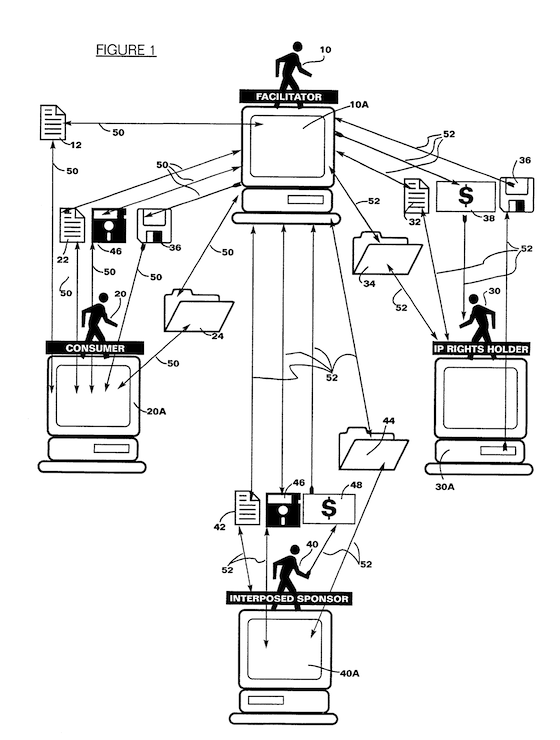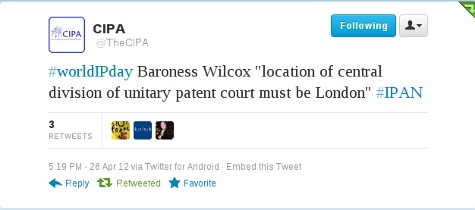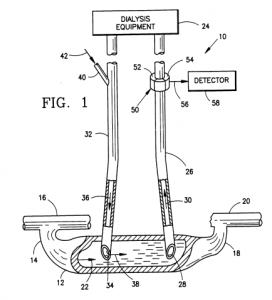An Era Of Discontent?
In Janurary this year I was happy to report that
In a move towards greater transparency, the European Patent Office is improving the access to the documents of the Administrative Council of the European Patent Organisation. Under this new policy, all public documents of the Administrative Council will be made available after each session and published on the EPO’s website. The documents of the October 2012 session are already accessible.
Well, let as have a look what actually has been published there …
Today, on August 30, 2013, I can see there a whopping bunch of 17 (seventeen) publicly accessible AC documents dated 2013, most of them reflecting minor technicalities. Even without having any privileged insights into the inner workings of the AC I feel much on the safe side to assert that just 17 published documents are a trickle compared to the full registry of documents circulated in that body during that time period. And, even this publication of a tiny minority of CA documents has not been announced widely and is hardly to find on the website of the EPO if you don’t already know where to look.
There appears to be only one valid conclusion: The public repository of CA documents as we see it now merely is sort of a fig leaf excuse for not wanting to have much insight into the CA business for the general public.
In this context it is important to closely examine the responsibilities: It would be grossly unfair to blame EPO personnel for this misery, Surely the general policy governing the public availability / confidentiality of CA documents is defined by the CA itself, not by EPO or its President. And the CA is made up of Representatives appointed by the EPC Member States (see Article 26 EPC). And those Representatives are not only selected by their respective national Government but also instructed, briefed, and supervised by the ministry in charge with IP politics (in most cases Ministry of Justice, I’d guess).
This means that on a high ministerial level the general thinking is that it would not be good to give plenty of information out to the general public about the proceedings of the CA of the EPO.
But it goes from bad to worse.
 The patent US 7,346,545, relating to delivering copyrighted media products through a server free of charge in exchange for watching advertisements, has been enforced by Ultramercial against a number of Internet media competitors, like Hulu, WildTangent and YouTube. In August 2010 the 545 patent has been found invalid by a California District Court in view of the Bilski v. Kappos ruling which has been issued shortly before by the US Supreme Court (CV 09-06918). For further information on this case, please see my earlier posting here.
The patent US 7,346,545, relating to delivering copyrighted media products through a server free of charge in exchange for watching advertisements, has been enforced by Ultramercial against a number of Internet media competitors, like Hulu, WildTangent and YouTube. In August 2010 the 545 patent has been found invalid by a California District Court in view of the Bilski v. Kappos ruling which has been issued shortly before by the US Supreme Court (CV 09-06918). For further information on this case, please see my earlier posting here.
To be on the safe side, the District Court applied a two-stage approach, that is, as a screening filter, the CAFC’s machine-or-transformation test and then the SCOTUS abstract idea test.
The MOT test failed as the District Court found that the “mere act of storing media on computer memory does not tie the invention to a machine in any meaningful way”. Further, the Court identified “using advertisement as a currency” as the core principle of the patent, while the claims do not cite any concrete features as to how the core principle can be implemented.
Some observers criticised the District Court’s reasoning as being capable to kill any invention where a key concept can be labelled ‘abstract’ even if the invention is clearly limited to an electronic implementation and even if the electronic implementation is central to the idea.
Now, as the Federal Circuit under Chief Judge Radar reviewed the case in appeal, it turns out that such criticism hit the mark (see decision of June 21, 2013), as the case was reversed and remanded. In its decision the Federal Circuit referred multiple times to the term “technology”, e.g.:
- The plain language of the [patent act] provides that any new, non-obvious, and fully disclosed technical advance is eligible for protection.
- After all, unlike the Copyright Act which divides ideas from expression, the Patent Act covers and protects any new and useful technical advance, including applied ideas.
- Far from abstract, advances in computer technology—both hardware and software—drive innovation in every area of scientific and technical endeavor.
 In this ealier posting on the America Invents Act we reported on the new Covered Business Methods Review (faq, info) which allows to challenge any business method patent before the Patent Trial and Appeal Board (PTAB) as soon as it is enforced against an accused infringer.
In this ealier posting on the America Invents Act we reported on the new Covered Business Methods Review (faq, info) which allows to challenge any business method patent before the Patent Trial and Appeal Board (PTAB) as soon as it is enforced against an accused infringer.
From a European perspective, this new proceedings seems particularly interesting as the question as to whether or not a claim falls under the CBM review is answered by 37 CFR § 42.301 as follows:
(a) Covered business method patent means a patent that claims a method or corresponding apparatus for performing data processing or other operations used in the practice, administration, or management of a financial product or service, except that the term does not include patents for technological inventions.
(b) Technological invention. In determining whether a patent is for a technological invention solely for purposes of the Transitional Program for Covered Business Methods (section 42.301(a)), the following will be considered on a case-by-case basis: whether the claimed subject matter as a whole recites a technological feature that is novel and unobvious over the prior art; and solves a technical problem using a technical solution.
This definition is surprisingly similar to what European case law (and German case law) has developed to define “methods for [...] doing business [...] and programs for computers as such” according to Art. 52 (2), (3) EPC (and § 1 (3), (4) PatG). Even further, the requirement of a “technological feature that is novel and unobvious” seems to correspond to the well-established Comvik approach (cf. T 641/00, 2002) of the EPO Boards of Appeal, according to which non-technical features cannot contribute to novelty and inventive step.
 One of our most successful presentations on business trips to Asia in recent years was the one about “Dos and Don’ts in European Filings” covering many practical hints that should be observed – possibly already at the drafting stage – upon filing direct EP applications with the EPO or entering the EP regional phase via the PCT route.
One of our most successful presentations on business trips to Asia in recent years was the one about “Dos and Don’ts in European Filings” covering many practical hints that should be observed – possibly already at the drafting stage – upon filing direct EP applications with the EPO or entering the EP regional phase via the PCT route.
At KSNH we are very happy to announce that an article by my colleagues Jochen Höhfeld and Shino Tanaka summarising this lecture has been recently accepted for publication by major IP journals in Japan, China, and Korea:
Japanese:
JPAA Journal “Patent”, Vol.66, No.4, 2013.3, pp. 14-19
China IP News, 2013-05-31, issue 1427, p. 8 (part 1)
China IP News, 2013-06-07, issue 1429, p. 8 (part 2)
Korean:
KPAA Association Journal, May 20, 2013, pages 6, 7
(see also here, No. 162 제810호, 2013.05.20)
Basically, the articles cover the following topics:
Claim Drafting
- Limitation of number of claims
- One independent claim per category
- Unity of the invention
- Reference numnerals
- Multiple independent claims
- Functional claim features
- Clarity of the claim language
- Claims in two-part-form (Jepson-type claims)
- Claim amendments
- Number of pages
- Basis for claim amendments
- Discussion of prior art
- Abstract
- Incorporation by reference
Organisational issues:
- Format of pages
- Entering the regional phase before the EPO (Euro-PCT)
- Regional pahse entry with the EPO acting as International Search Authority
- Designation of the inventor
- Divisional applications before the EPO
I know that I am a little bit late with this particular piece of information but nevertheless I think that the new policy of the Administrative Council (AC) of the European Patent Organisation (EPOorg) to publish (some? most?) of their Official Documents is worth to be disseminated widely.
http://www.epo.org/about-us/organisation/documentation/ac-documents.html
In a move towards greater transparency, the European Patent Office is improving the access to the documents of the Administrative Council of the European Patent Organisation. Under this new policy, all public documents of the Administrative Council will be made available after each session and published on the EPO’s website. The documents of the October 2012 session are already accessible.
The Administrative Council is the European Patent Organisation’s governing body. Made up of delegations from the Organisation’s 38 Member States, it is responsible for mainly supervising the activities of the European Patent Office, the executive body of the Organisation.
It appears that non-public Documents are not only not published but also not mentioned on the website at all. It is not known to me which criteria are applied internally to identify public and non-public Council Documents.
The Administrative Council is one of the two organs of the European Patent Organisation, the other being the European Patent Office. The Council acts as the Office’s supervisory body and is composed of the representatives of the EPO member states.
Present Documents include (inter alia):
- CA/D 17/12 Decision of the Administrative Council of 11 December 2012 on payment of a collective reward to staff of the European Patent Office in active service during 2011 (Payment of EUR 4000,– for for each full-time EPO staff member)
- CA/98/12 Rev. 1 Collective reward for EPO staff
- CA/106/12 SPLH – Exchange of views on the documents produced by the Tegernsee Experts Group (study on grace period, study on 18-month-publication, treatment of conflicting applications, study on prior user rights, next steps within the Tegensee Process, recommendation for publication)
(Photo: EPO)
EU Unitary Patent / Unified Patent Court: The Final Showdown Is Nigh
Recently Document 10059/12 originating from the Danish EU Presidency and dated May 24, 2012, has been released to the public. It is titled Draft Agreement on the creation of a Unified Patent Court – Suggested way forward for a political agreement and addresses Permanent Representatives Committee (Part 1) / Counci (COREPER1). The Document re-iterates that, according to the Danish Presidency, the creation of unitary patent protection and the Unified Patent Court are key drivers for strengthening economic growth and job-creation in the European Union and cornerstones in building a strong science base in Europe.
Again according to that Document, on December 05, 2011, the Competitiveness Council had an exchange of views on the last outstanding issues regarding the creation of a Unified Patent Court based on Document 18239/11. At the end of those discussions, and while keeping in mind that nothing is agreed until everything is agreed, delegations had reached a general agreement on all but one outstanding issue, namely the place where the seat of the Central Division of the Court of First Instance will be situated.
No substantial portions of Document 18239/11 have been released yet; the heavily redacted published version only discloses some points of interest as follows:
- Renewal fees
- The financial contribution of the Member States hosting a local division, a regional division, the central division of the Court of 1st Instance or the Court of Appeal
- Other financial contributions of the Member States
- Court’s fees
- Language of proceedings
- Actions to be brought to the central division
- Transitional period
- Revision clause
- Number of ratifications required for the entry into force
- Breeders’ privilege
- Local divisions
- The seat of Central Division of the Court of 1st Instance, the seat of the Court of Appeal with the Registry and the seat of the Patent Mediation and Arbitration Centre
You will note that apparently the issue of the rights of European Patent Attorneys to represent their Clients is not mentioned on this list.
Now back to Document 10059/12. This text further discloses that at an informal meeting of the members of the European Council on January 30, 2012, the participating Member States (i.e. all EU Member States except ES, IT) stated their commitment towards reaching a final agreement on the European patent reform at the latest in June 2012. This commitment was confirmed by the European Council on March 01-02, 2012, and by the members of the European Council on May 23, 2012. Based on the common understanding that the texts of the draft Agreement on a Unified Patent Court and of the draft Statute of that Court have been thoroughly discussed under the Polish Presidency, the Danish Presidency is reported to have undertaken intensive consultations, aimed at reaching a compromise on the last outstanding issue concerning the seat of the Central Division. As a follow up on these consultations, the Danish Presidency invited the delegations of the participating EU Member States to discuss the location of the seat of the Central Division of the Court of First Instance with a view to reaching a political agreement.
Finally, reference is made to the fact according to which the Competitiveness Council on December 05, 2011, the participating Member States reached general agreement on a draft declaration of the contracting Member States concerning the preparation for the coming into operation of the Unified Patent Court, as contained in Document 17580/11 (Document again heavily redacted, little substantial disclosure). In response to several Member States having expressed the need for further clarification on the process following a political agreement on the patent package, the Danish Presidency now circulates a draft statement originating from the Danish Presidency but apparently also supported by the incoming Cypriot Presidency on the process following such a political agreement, as set out below:
Continue reading »
Anti-Patent Campaigners put their trust in François Hollande as EU Council attends to Unitary Patent Court again

The newly elected President of France, François Hollande promising "change". Will he be the first anti-patent campaigner governing an EU state?
Now that François Hollande took office as the new President of France after his marginal victory in the French presidential elections this May, he will now introduce himself to official EU policy on his first Competitive Council meeting on May 31/June 1. The draft agenda for this meeting (cf. item 19), reading “Draft agreement on a Unified Patent Court and draft Statute – Political agreement“, electrifies observers of and parties involved the ongoing European patent legislation saga (see also press release, middle of page 5).
In recent months the upcoming French elections brought the negotiations on the Unified Patent Court Agreement to a complete standstill, as the dynamics between the French, British and German heads of govenment and the general political climate is a crucial factor in this legislative process, especially since the only serious and realistic candidates for the attractive seat of the new UPC Central Division are Paris, London, and Munich and it is frequently announced through official channels that this question is the only remaining open issue.
The EU Council expressed already in January this year its believe that a final agreement can be reached in June 2012 (see official statement) and it was the President of the European Council, Herman Van Rompuy, who clarified in a recent letter that he hopes (or expects) the remaining issues to be sorted out at next week’s Competitiveness meeting:
“[...] This deal is needed now, because this is an issue of crucial importance for innovation and growth. I very much hope that the last outstanding issue will be sorted out at the May Competitiveness Council. If not, I will take it up at the June European Council.”
But IP matters will not become easier in Europe with Mr Hollande, given his apparent openness to positions of critics of the current patent system. In fact, some of the answers (pdf) of Ms Fleur Pellerin (@fleurpellerin), responsible for the digital economy in Hollande’s campaign team, on a tendentious pre-election questionnaire of French anti software patent group “April” appear as if the socialist candidate for president (or his spokeswoman) was one of the ideological leaders of that pressure group:
The patentability of software would induce a partitioning of innovation that would be harmful to the ecosystem seen in its digital together. I am therefore opposed to the patenting of software.
Yesterday, in Berlin the German industry association Bundesverband der Deutschen Industrie e.V. (BDI) has held a conference titled Tag des geistigen Eigentums – Geistiges Eigentum verpflichtet (Intellectual Property Day - Property entails obligations). According to a report published on Heise’s Newsticker the topic of the pending proposal for a Unitary Patent was discussed.
Reportedly Mr Christoph Ernst from German Ministry of Justice (Bundesjustizministerium) has re-affirmed his expectation that a conciliation on this matter can and will be reached until next meeting of the EU Competitiveness Council to be expected end of May or in June later this year.
Mr Lothar Steiling, Director Intellectual Property with Bayer AG and President of the VPP (German Association of Intellectual Property Experts), is reported to have supported the proposed enhanced co-operation to create a Unitary Patent on behalf of those circles of insustry which have decided not to oppose the pending draft contrary to the dismissive language used especially be EPLAW. Another supportive statement came from Mr Andreas Thürer, Director Intellectual Property with Bosch Rexroth.
Ms Kerstin Jorna from EU Commission DG Internal Market is said to have argued more cautiously, considering that the proposal still might fail. She explicitly appealed to the representatives of German Industries to come forward in support of the Unitary Patent.
Furthermore, statements of FFII as well as of representatives of the German Piratenpartei are said to have expressed their concerns especially that the Unitary Patent might turn out to be a tool to facilitate legal acceptance of software patents (patents on computer-implemented inventions CII).
Continue reading »
A couple of years ago, in 2007 the European Patent Office (EPO) was pleased to invite to its annual Online Services conference, which that year took place in the Lake Como area, Italy, on 13 and 14 November. The conference theme was ‘End-to-end electronic processing – how to survive when the EPO no longer accepts paper‘. In fact, within the broader context of the European Patent Network EPN, the EPO strived to modernise itself by announcond advanced electronic digital network superstructures.
The intention was to eliminate paperwork also with regard to communication to and from the applicants, that is, in many cases, their patent attorneys, well before the end of the decennium; see Barbara Cookson’s report here. A message on the EPO website (which, meanwhile, is long gone) said:
Continue reading »
Recently the European Patent Office (EPO) has published Decision T 1695/07 – 3.3.07 of one of the Boards of Appeal dealing with the exception from patentability under Article 53(c) EPC. The catchword reads as follows:
I. A blood manipulation process involving the continuous removal of blood from a patient, its subsequent flowing through a circulating line of an extracorporeal circuit and its re-delivery to the patient is a method of treatment of the human body by surgery excepted from patentability under Article 53(c) EPC. It does not belong to the kind of methods which should not be covered by the exception clause according to the “narrower understanding” suggested by the Enlarged Board of Appeal in decision G 1/07, because the process is not performed in a “non-medical, commercial environment” and cannot be considered as a “minor intervention” being performed on “uncritical parts of the body” (Reasons, 8 to 10).
II. Such an in vivo process requires “professional medical expertise” and belongs to the kind of interventions representing the “core of the medical profession’s activities”, even when performed by paramedical support staff (Reasons, 11).
III. Even when the process is carried out with the required medical professional care and expertise, it involves ”substantial health risks” for the patient. A health risk is considered to qualify as “substantial” whenever it goes beyond the side effects associated with treatments such as tattooing, piercing, hair removal by optical radiation, micro abrasion of the skin as mentioned in G 1/07. A factual analysis of absolute or relative risks and their likelihood of occurrence based on objective evidence is hardly feasible and should therefore not be required.
In the Decision the Board argues the claimed process does not fall under the “narrower understanding”, i.e. does not belong to the kind of methods which should not be covered by the exception clause according to the criteria developed in G 1/07 because of it comprises the steps of
- “continuously removing blood from a downstream location in the shunt (12) …” and
- “delivering the removed blood flowing in said circulating line by way of an outlet connected to an outlet side of said circulating line to an upstream location of said shunt, …”.
Furthermore and again according to the Board, It has been established that these steps are invasive and represent a substantial physical intervention on the body which requires professional medical expertise to be carried out and which entails a substantial health risk even when carried out with the required professional care and expertise. ccording to the established jurisprudence of the Boards of Appeal, a multi-step method falls under the exception clause of Article 53(c) EPC, if it includes at least one feature that constitutes a method step for the treatment of the human body by surgery. The possible technical contribution of the invention as mentioned by the proprietor appellants is not a criterion to be taken into consideration in this context.
The k/s/n/h::law blog
Some of the patent attorneys of the KSNH law firm have joined their efforts to research what is going on in the various branches of IP law and practice in order to keep themselves, their clients as well as interested circles of the public up to date. This blog is intended to present results of such efforts to a wider public.
Blog Archives
- November 2013 (2)
- October 2013 (1)
- September 2013 (1)
- August 2013 (2)
- July 2013 (3)
- June 2013 (5)
- March 2013 (5)
- February 2013 (4)
- January 2013 (5)
- December 2012 (5)
- November 2012 (5)
- July 2012 (5)
- June 2012 (8)
- May 2012 (5)
- April 2012 (3)
- March 2012 (4)
- February 2012 (5)
- January 2012 (6)
- December 2011 (12)
- November 2011 (9)
- October 2011 (9)
- September 2011 (4)
- August 2011 (7)
- July 2011 (4)
- June 2011 (1)
Blog Categories
- business methods (6)
- EPC (7)
- EPO (12)
- EU law (92)
- ACTA (8)
- CJEU (4)
- Comitology (1)
- competition law (2)
- Enforcement (6)
- EU Unified Patent Court (62)
- FTA India (1)
- TFEU (2)
- Trade Marks (5)
- European Patent Law (37)
- German Patent ACt (PatG) (1)
- German patent law (5)
- Germany (6)
- Pirate Party (3)
- International Patent Law (4)
- PCT (2)
- IP politics (10)
- licenses (2)
- Litigation (5)
- Patentability (7)
- Patents (12)
- Piratenpartei (2)
- Software inventions (10)
- Uncategorized (9)
- Unitary Patent (24)
- US Patent Law (4)
Comments
- kelle on Germany: Copyright Protection More Easily Available For Works Of “Applied Arts”
- Time Limits & Deadlines in Draft UPCA RoP: Counting The Days - KSNH Law - Intangible.Me on Wiki Edition of Agreement on Unified Patent Court Agreement (UPCA)
- Time Limits & Deadlines in Draft UPCA RoP: Counting The Days | ksnh::law on Wiki Edition of Agreement on Unified Patent Court Agreement (UPCA)
- Wiki Edition of Agreement on Unified Patent Cou... on Wiki Edition of Agreement on Unified Patent Court Agreement (UPCA)
- European Commission Takes Next Step Towards Legalising Software Patents in Europe | Techrights on EU Commission publishes Proposal of amendend Brussels I Regulation for ensuring Enforcement of UPC Judgements
Blogroll
- 12:01 Tuesday
- America-Israel Patent Law
- Anticipate This!
- AwakenIP
- BlawgIT
- BLOG@IPJUR.COM
- BP/G Radio Intellectual Property Podcast
- Broken Symmetry
- Class 46
- Director's Forum: David Kappos' Public Blog
- Gray on Claims
- I/P UPDATES
- IAM Magazine Blog
- Intellectual Property Intelligence Blog
- IP Asset Maximizer Blog
- IP CloseUp
- IP Dragon
- IP Watch
- IP Watchdog
- IPBIZ
- ipeg
- IPKat
- ITC 337 Law Blog
- Just a Patent Examiner
- K's Law
- MISSION INTANGIBLE
- Patent Baristas
- Patent Circle
- Patent Docs
- Patently Rubbish
- PatentlyO
- Patents Post-Grant
- Reexamination Alert
- SPICY IP
- Tangible IP
- The 271 Patent Blog
- The Intangible Economy
- THE INVENT BLOG®
- Think IP Strategy
- Tufty the Cat
- Visae Patentes
The KSNH blogging landscape


This blog and the German-language sister blog k/s/n/h::jur link to the two popular and privately run blogs IPJur und VisaePatentes and continue their work and mission with a widened scope and under the aegis of our IP law firm.
ksnhlaw on Twitter
- No public Twitter messages.
 KSNH::JUR Feed (german)
KSNH::JUR Feed (german)- Ist Verschlüsselung passé? September 6, 2013Auf verschiedenen Feldern beruflicher Praxis ist dafür zu sorgen, dass Kommunikation vertraulich bleibt. Die trifft beispielsweise für Ärzte zu, aber auch für Anwälte, darunter auch Patentanwälte. Einer der zahlreichen Aspekte, die in diesem Zusammenhang eine Rolle spielen, ist die Technik, um die Vertraulichkeit beruflicher Kommunikation sicherzustellen. Wa […]
- EU-Einheitspatent: Demonstrativer Optimismus und Zahlenmystik allerorten – Naivität oder politische Beeinflussung? June 26, 2013Nach mehreren vergeblichen Anläufen zur Schaffung eines EU-weiten Patentsystems wurde 1973 als Kompromiss das Europäische Patentübereinkommen unterzeichnet, welches unabhängig von der seinerzeit noch EWG genannten Europäischen Union System zur zentralisierten Patenterteilung mit nachgeordnetem Einspruchsverfahren durch das Europäische Patentamt schuf. Wie wi […]
- Moderne Zeiten oder: DPMA und Patentgericht streiten über die elektronische Akte April 25, 2013Bekanntlich hat das Deutsche Patent- und Markenamt (DPMA) im Jahre 2013 mit der rein technischen Fertigstellung der Einrichtungen zur elektronischen Akteneinsicht einen wichtigen Meilenstein seines Überganges von der Papierakte zur “elektronischen Akte” erreicht. Im DPMA werden aber bereits seit dem 01. Juni 2011 Patente, Gebrauchsmuster, Topografien und erg […]
- Gutachten zu Forschung, Innovation und technologischer Leistungsfähigkeit Deutschlands 2013 March 11, 2013Unter dem Datum vom 28. Februar 2013 ist die Bundestags-Drucksache 17/12611 veröffentlicht worden Sie trägt den Titel Unterrichtung durch die Bundesregierung - Gutachten zu Forschung, Innovation und technologischer Leistungsfähigkeit Deutschlands 2013. Die Bundesregierung legt dem Deutschen Bundestag seit dem Jahr 2008 […]
- 3D-Printing: Zum Filesharing von 3D-Modelldaten February 25, 2013In meiner kleinen zuvor angekündigten Reihe über rechtliche Aspekte des 3D Printing komme ich heute auf die Frage zu sprechen, ob die Hersteller von Gerätschaften es hinnehmen müssen, wenn Ersatztreile davon – vom Brillengestell über Smartphone-Gehäuseteile bis hin zu Rastenmähermotor-Abdeckungen – gescannt und die daraus […]
- Ist Verschlüsselung passé? September 6, 2013








